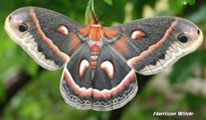Native Plants
Search for native plants by scientific name, common name or family. If you are not sure what you are looking for, try the Combination Search or our Recommended Species lists.
Acer negundo
Acer negundo L.
Box Elder, Box Elder Maple, Ash-leaved Maple, Ashleaf Maple, Red River Maple, Fresno De Guajuco
Aceraceae (Maple Family)
Synonym(s):
USDA Symbol: ACNE2
USDA Native Status: L48 (N), CAN (N)
Small to medium-sized tree, commonly with a short trunk and widely spreading branches and light green foliage. It doesn’t look like other maples because of its irregular growth, sprouting base, and compound leaves. Fall foliage is usually insignificant.
Box Elder is classed with maples, having similar, paired key fruits, but is easily distinguishable by the pinnately compound leaves. Hardy and fast-growing, it is planted for shade and shelterbelts but is short-lived and easily broken in storms. Common and widely distributed, it is spreading in the East as a weed tree. The common name indicates the resemblance of the foliage to that of elders (Sambucus) and the whitish wood to that of Box (Buxus sempervirens L.).
Plant Characteristics
Duration: PerennialHabit: Tree
Leaf Retention: Deciduous
Leaf Arrangement: Opposite
Leaf Complexity: Pinnate
Leaf Shape: Elliptic
Leaf Venation: Pinnate
Leaf Pubescence: Puberulent
Leaf Margin: Lobed , Serrate
Leaf Apex: Acute
Leaf Base: Rounded
Breeding System: Flowers Unisexual , Dioecious
Inflorescence: Raceme
Fruit Type: Samara
Size Notes: Up to about 50 feet tall.
Leaf: Opposite, pinnately compound, with 3, 5, or 7 leaflets; each leaflet elliptic to ovate, pointed at the tip, tapering or rounded at the base, usually coarsely toothed along the edges, light green and smooth on the upper surface, paler on the lower surface, up to 4 inches long.
Autumn Foliage: yes
Flower: Flowers insignificant. Male and female borne on separate trees, several in a cluster, greenish yellow, appearing as the leaves begin to unfold.
Fruit: Samaras 1-seeded, pale yellow, many, in long, drooping clusters, each one 1 1/2-2 inches long, maturing in autumn and persisting in the spring.
Bloom Information
Bloom Color: Yellow , Green , BrownBloom Time: Mar , Apr
Distribution
USA: AL , AR , AZ , CA , CO , CT , DC , DE , FL , GA , IA , ID , IL , IN , KS , KY , LA , MA , MD , ME , MI , MN , MO , MS , MT , NC , ND , NE , NH , NJ , NM , NV , NY , OH , OK , OR , PA , RI , SC , SD , TN , TX , UT , VA , VT , WA , WI , WV , WYCanada: AB , BC , MB , NB , NS , NT , ON , PE , QC , SK
Native Distribution: ME to Man., s. to n. FL & e. TX; also n. CA to CO, s. to s. Mex.
Native Habitat: Moist woods; stream banks; floodplains
Growing Conditions
Water Use: MediumLight Requirement: Sun
Soil Moisture: Moist
CaCO3 Tolerance: High
Drought Tolerance: High
Soil Description: Variable.
Benefit
Use Ornamental: This hardy, fast-growing tree can survive dry and extremely cold conditions, so it is widely planted as a shade and shelterbelt tree.Use Wildlife: Birds, Other Showy Insects
Use Food: Plains Indians made sugar from the sap. When sugar was scarce, Prairie settlers sometimes tapped this tree to make maple syrup, but Manitoba maple is the least productive maple for this purpose.
Warning: The wood is weak and will break up in ice and wind.
Conspicuous Flowers: yes
Attracts: Birds
Value to Beneficial Insects
Special Value to Honey BeesThis information was provided by the Pollinator Program at The Xerces Society for Invertebrate Conservation.
Butterflies and Moths of North America (BAMONA)
|
Cecropia silkmoth (Hyalophora cecropia)  Larval Host |
Find Seed or Plants
Find seed sources for this species at the Native Seed Network.
View propagation protocol from Native Plants Network.
National Wetland Indicator Status
| Region: | AGCP | AK | AW | CB | EMP | GP | HI | MW | NCNE | WMVE |
| Status: | FAC | FACW | FAC | FAC | FAC | FAC | FAC |
From the National Organizations Directory
According to the species list provided by Affiliate Organizations, this plant is on display at the following locations:Lady Bird Johnson Wildflower Center - Austin, TX
Pineywoods Native Plant Center - Nacogdoches, TX
Nueces River Authority - Uvalde, TX
Natural Biodiversity - Johnstown, PA
Native Seed Network - Corvallis, OR
Jacob's Well Natural Area - Wimberley, TX
NPSOT - Williamson County Chapter - Georgetown, TX
Bibliography
Bibref 1186 - Field Guide to Moths of Eastern North America (2005) Covell, C.V., Jr.Bibref 298 - Field Guide to Texas Trees (1999) Simpson, B.J.
Bibref 1185 - Field Guide to Western Butterflies (Peterson Field Guides) (1999) Opler, P.A. and A.B. Wright
Bibref 354 - Native & Naturalized Woody Plants of Austin & the Hill Country (1981) Lynch, D.
Bibref 841 - Native Alternatives to Invasive Plants (2006) Burrell, C. C.
Bibref 297 - Trees of Central Texas (1984) Vines, Robert A.
Search More Titles in Bibliography
Additional resources
USDA: Find Acer negundo in USDA PlantsFNA: Find Acer negundo in the Flora of North America (if available)
Google: Search Google for Acer negundo
Metadata
Record Modified: 2022-09-15Research By: NPC, JSC